Menu
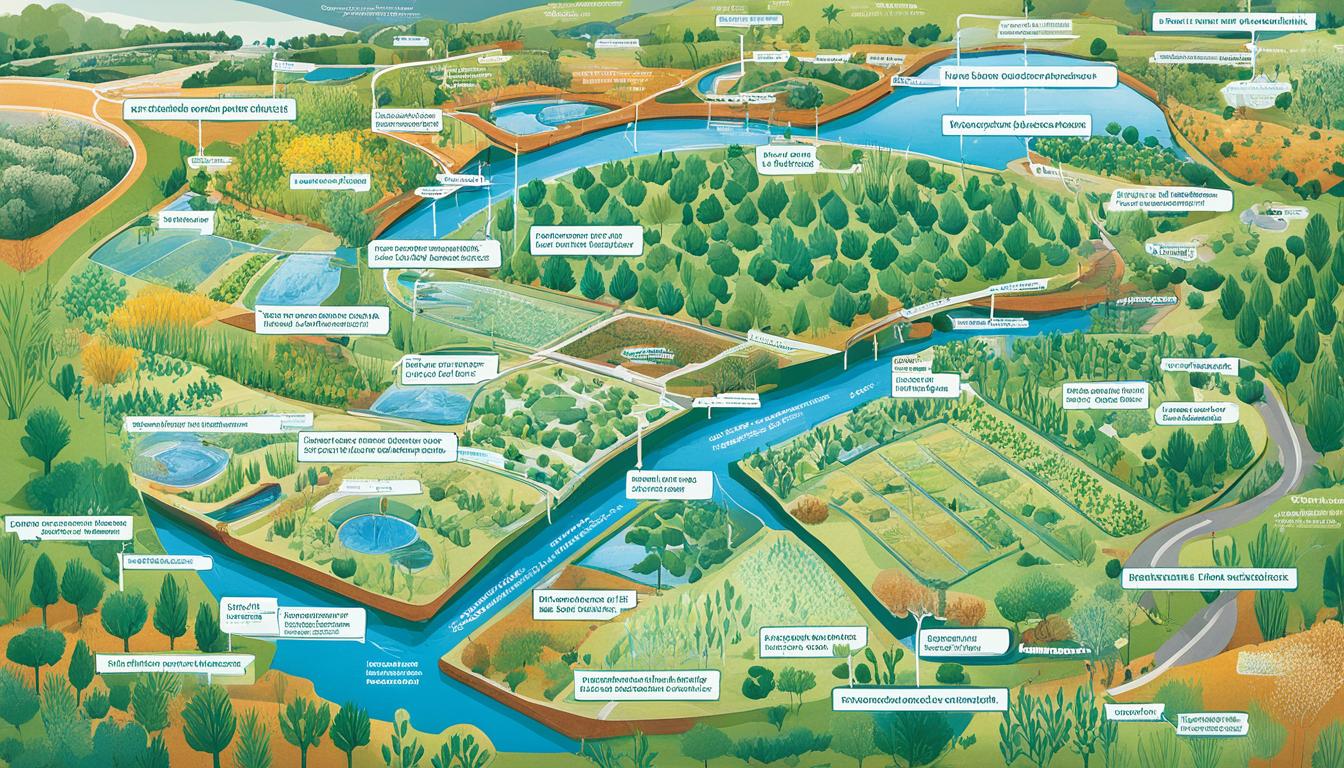
Did you know the Yarraville Distillery in Australia cut its water use by 93% by adding new cooling towers? This move saved about 18ML of drinking water each year. It shows how Australia uses clever ways to fight water scarcity. They apply these methods in many industries, from making ethanol to mining, for a more sustainable future.
Australia faces challenges due to its varied climate and changing rainfall. Water shortage is a constant issue. To fight this, new tech and smart water management are in use. These efforts stress the importance of saving water and using it in ways that protect our planet.
Australia faces big challenges with saving water due to its changing weather and rain. It gets an average of 470mm rain a year, though some areas get a lot less. The long dry spells and different water needs make saving water tough.
Africa has always grappled with water scarcity, worsened by its vast deserts. In 2018, most states got less rain than usual, showing a longstanding problem. This issue is complex and deep-rooted.
Today, Australia is using more water, especially in big cities. The water use might go up by 73% to over 2,650 gigalitres in three decades. Desalination plants are helping by making 674 gigalitres of extra water. Perth also depends more on groundwater now than in the past.
Water scarcity affects many areas, with agriculture using 70% of the water. Cities like Melbourne have cut water use to 155 litres per person each day. They use strategies like rainwater collection and water-efficient homes.
The Murray-Darling Basin Plan aims to keep 60% of its water for nature. The plan also allows water trading in farming. These steps show the need for clever water-saving plans to handle water challenges in Australia.
These actions highlight the vital role of sustainable water use. They provide a strong case study on water efficiency. Team efforts show the diverse tactics needed for Australia’s water conservation struggle.
Australia has taken big steps to deal with water shortages. It has started using new technologies for better water management. These steps move us closer to making water use more sustainable.
In Australia, smart water systems are leading the way in saving water. These systems keep an eye on water use and make sure it’s used well. They also help reduce water waste.
For example, smart irrigation systems change the amount of water plants get based on how moist the soil is. This has cut down water use on farms. Desalination plants are also doing great work. They are turning saltwater into fresh water. This process gives cities more water, especially when rainfall is low.
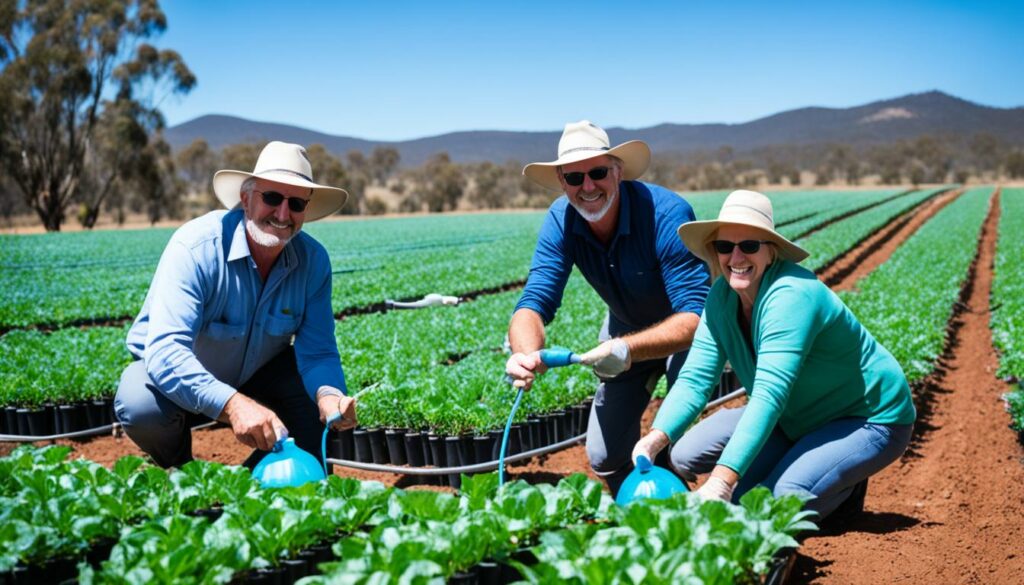
A mix of techniques is making a big difference in Australia, especially in cities. People are recycling water more, which helps save and use water better. Rainwater is being collected too, putting a lot of water back into the system.
For farming, there are new methods that use less water. Since farming uses most of Australia’s water, these new ways are very important. They are changing how water gets used in agriculture, lowering the amount needed.
| Technological Innovation | Impact on Water Conservation |
|---|---|
| Automated Irrigation Systems | Reduces agricultural water usage significantly. |
| Desalination Plants | Provides substantial additional freshwater resources. |
| Recycled Water Use | Allows for sustainable water management in urban centres. |
| Rainwater Harvesting | Contributes a noteworthy amount to residential water supplies. |
Also, working together helps. By planning cities better, using resources well, and getting everyone involved, we save more water. The Love Water campaign, for example, aims to cut water use by 10% in a region. It shows how local action makes a big difference.
By combining new technology with community efforts, Australia is doing its best for water conservation. This mix works well for managing water better today and in the future.
CSR’s work at the Yarraville Distillery is a top example in Australia of saving water. It shows the big plus of using less energy in how we use water.
The old cooling towers at the distillery were not efficient with water and used a lot of energy. CSR knew they needed to be more eco-friendly. So, they started a project to swap the towers. They aimed to use less water and power.
Several key steps were taken for this project:
The project at the Yarraville Distillery showed great results:
Not only did this show CSR’s focus on saving water and energy, but it also proved how great projects can do both. They help save water and power, making industry more eco-friendly.
Imerys Minerals Australia is working hard to use less water in making kaolin. Their goal is to manage water better, aiming to solve the issue of high water use in mining.
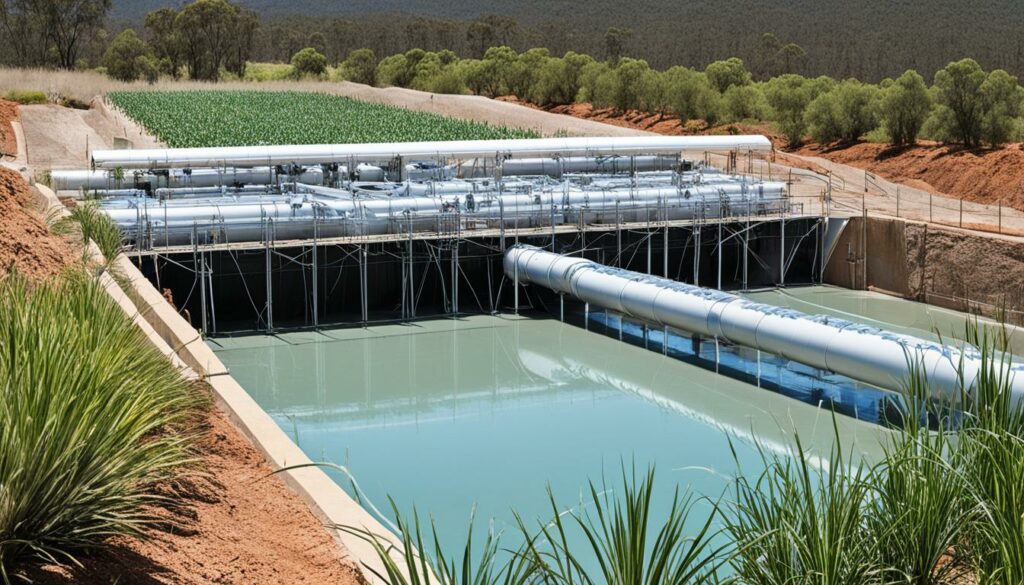
The main aim of Imerys Minerals Australia is to cut down on water during kaolin extraction. They aim to use only 5KL of water per tonne of product. This is a big step because making kaolin needs a lot of water.
Imerys has put in place many methods to save water:
The results of their work have been amazing. Imerys reduced water use by about 20%. In two years, they moved 300 million litres of water from one site to another. They also reached 90% of their 2015 sustainability goals, showing their strong dedication to water-saving and other eco-friendly efforts.
| Metric | Outcome |
|---|---|
| Water Efficiency Improvement | 20% |
| Water Transferred to Ballarat System | 300 million litres |
| Achievement of 2015 Sustainable Development Objectives | 90% |
The Shell Newport Terminal leads in saving water with its innovating approach in Australia. It uses a special system to recycle water used for fire pump tests. This effort is a big step forward in using high-tech ways to save water.
A detailed water audit at the Shell Newport Terminal showed big chances to reuse and save water. The audit revealed that a lot of water from fire pump tests could be recycled. This finding led to the creation of a water recirculation system.
Adding a specific water recirculation tank for fire pump tests was a game-changer at the terminal. This tank collects and reuses test water. This change means they don’t need as much fresh water for tests. This is good for saving water and reducing waste.
The system saves roughly 4.2 million litres of water every year. This is a big win for water conservation. What’s more, it also lessens the amount of stormwater runoff, making the terminal more eco-friendly. This project proves that recycling water from fire pump tests is very effective. It sets a great example for other places in Australia to follow.
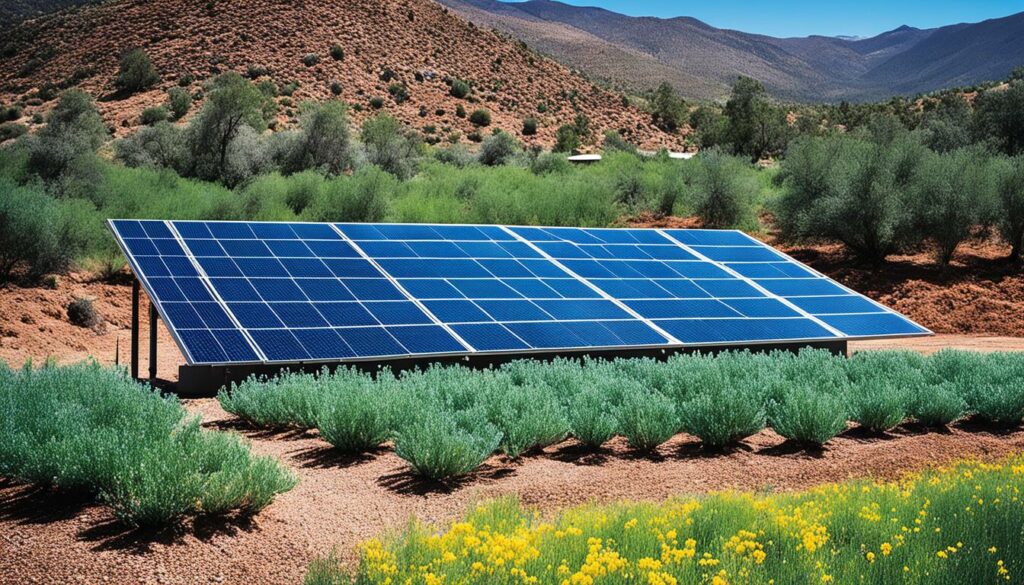
In Australia, the mining industry is advancing its tech to save water. By using eco-friendly water solutions, mining companies are making their work more sustainable. This change is big in how they operate.
New tech in mines is cutting down on water use a lot. For example, Dust-A-Side Australia offers services that have halved water use in mines. Their managed areas see a huge 96% less water used on haul roads.
From Dust-A-Side’s full service, water saved by managed roads reaches over 90%. These roads need only 34 litres of water per square metre yearly. In contrast, unmanaged roads use 850 litres each year for dust control.
Case studies in Australia show real benefits from water-saving efforts. St Ives Gold Mining Co cut its scheme water use by half using better tech and practices. They also found ways to use much less water in processing, saving half what they usually did.
Across the industry, there’s also been good progress with reusing water. For example, the use of wash bay pond water nearly doubled from July to August. Moorebah Dam has been providing a lot of fresh water too, as much as 130,000kL in 2020 and around 100,000kL in 2021.
| Water-Saving Measure | Impact |
|---|---|
| Dust-A-Side Australia managed service | 50% reduction in water usage |
| Managed parts of haul roads | 96% reduction in water usage |
| Full-service offering | 90% water consumption savings |
| St Ives Gold Mining Co’s improved technologies | 50% reduction in scheme water usage |
| Moorebah Dam’s fresh water contribution | 130,000kL in 2020, 100,000kL in 2021 |
These studies highlight the importance of new tech and eco-friendly water methods in mining. Australian mines are on a good path towards better water use and sustainability.
Australia has found a smart way to deal with water scarcity. Its approach to water trading is a model for other countries. This system makes sure water goes where it’s most needed, helping both the economy and the environment. With this system, Australia has improved how it manages water by using market methods.
In the Murray-Darling Basin (MDB), water trading has many benefits. As of 2016-17, it made up a huge part of trading activities. This showed that moving water to where it’s more useful worked well.
Good rules are key to the success of water trading in Australia. In the MDB, trading almost reached AUD$2 billion a year. This means water can protect the economy, especially during droughts. For example, water trading helped reduce economic losses from droughts.
Water trading is good for the environment too. The Australian Government has made sure to keep water for nature in the MDB. Also, using water wisely has boosted production by billions of dollars.
This shows how important the right rules are. They help pay for water trading improvements. For example, in 2022-23, $2.1 million will help start new water projects.
The Murray-Darling Basin shows how to use water wisely. It covers a big area in Australia. This area has had to deal with lots of environmental problems. But, it’s also a place where they focus on managing water well.
In the past, more than half the trees in the Basin were cut down. This led to problems like soil erosion and dirty rivers. Most of this happened in dry areas, which made managing water for farming even harder.
The Murray-Darling Basin Commission (MDBC) has planned ways to tackle these issues. They focus on many areas to protect the environment.
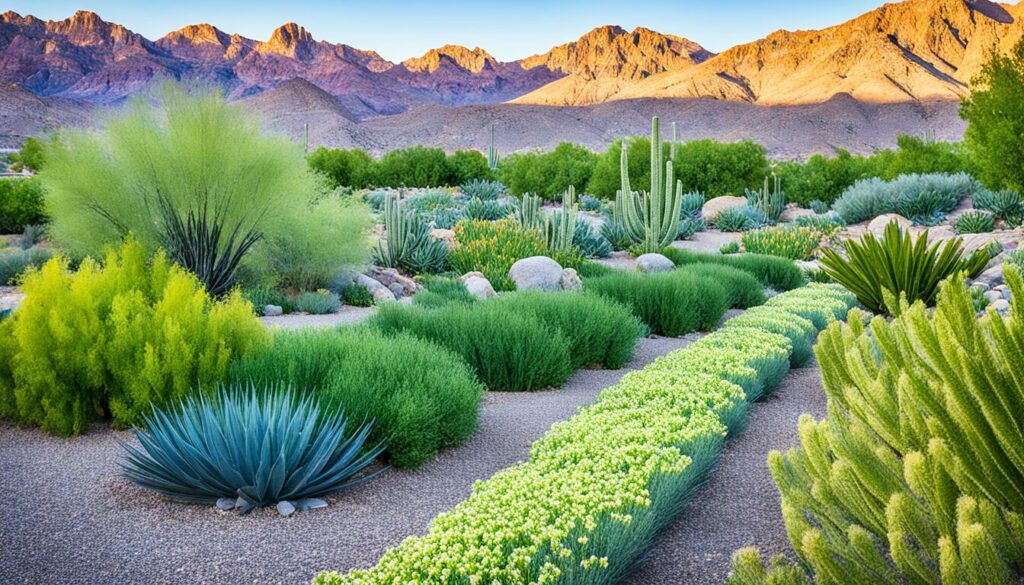
Water trading is a big help in managing water. It lets water move where it’s needed most. This helps use water in the best way possible.
Thanks to water trading, states work together better. This is good for the environment and for farming. It’s all about using water the smart way.
Stopping too much irrigation has helped nature a lot. The Basin has plans in place to look after the land and water. This has already helped many plants and animals.
These steps prove that looking after the earth and doing business can go hand in hand. They show that the way we use water can be good for everyone.
Goulburn-Murray Water (G-MW) brings big changes to how farming works in Victoria’s north. They have smart plans and use water trading well. This helps farmers use water better, grow more food, and keep the land safe.
Trading water is now key for making farming water-wise. Since 2007, the Food Bowl Modernization Project has been a big help. It aimed to make water use better and created more water to use. But, farmers were worried about losing water rights. Still, many see the good side of trading.
This project gave out 75 GL of water for the environment. It showed how much nature matters. Now, water flows better in the fields, helping plants and animals. This is really important since most water here is used for farming.
Goulburn-Murray Water is pushing for greener farming. Most of this area’s water is used to grow food. By making water use smarter, they reduce waste, helping both the land and farmers.
In 2016-2017, over 6 million megaliters were used to grow crops here. This shows the area is a big part of Australian farming. G-MW’s work lets farmers look after their water well. This means more food and a safe environment.
Their focus on better water use doesn’t stop. They keep upgrading and using water trading. This keeps farming good for people and nature. Goulburn-Murray Water sets a good example for all of us on using water right.
Water-saving techniques have brought big benefits to local areas in Australia. They’ve got people working together to save water. This has made water easier to get and use. Educational programmes and better ways of recycling water have helped. They’ve made a real difference in how much water people use and have.
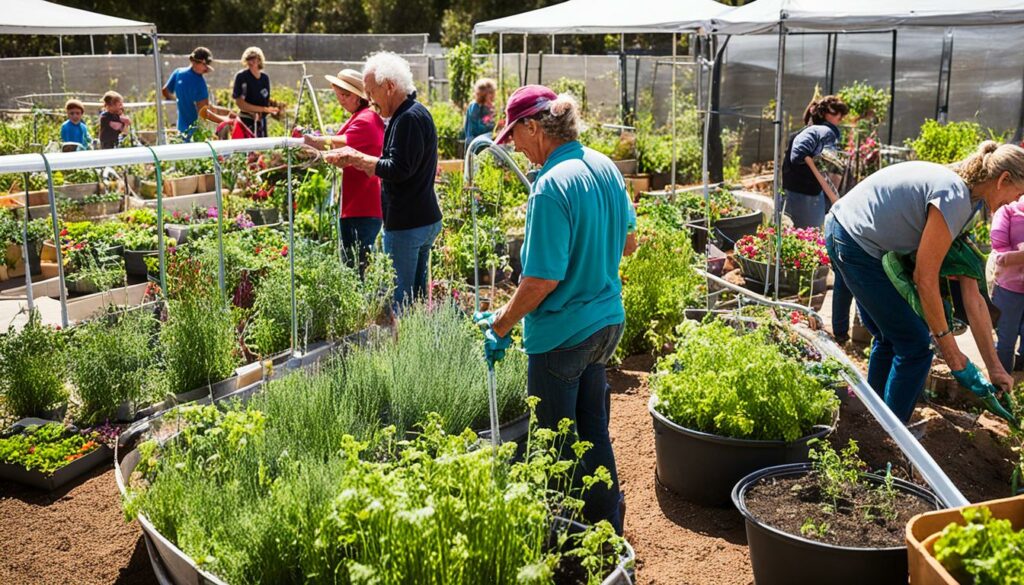
People are getting more involved in saving water. This is because of campaigns and projects that make them aware. For example, the Nature Knows Best campaign by Water Corporation got a lot of views. It showed how people’s habits with water were changing for the better. These group efforts help everyone take care of water as a big team.
Improving how easily people can use water is a key goal. TheTap Inprogramme uses discussions and workshops to teach people. Now, 87% of them know when they can use water. This helps them follow water rules better. Also, using recycled water for certain needs has meant more water for important things like firefighting.
| Initiative | Impact |
|---|---|
| Hunter Water’s Love Water campaign | 10% reduction in water use by customers |
| Tap In programme | 87% of participants aware of water days |
| Water Corporation’s Nature Knows Best | 1.9 million video views, 7.3 million impressions |
Many different actions are being taken to save water and get everyone involved. This not only makes local people more active in saving water but also helps to manage water more wisely and safely. All these efforts show a big step forward in making sure we use water in ways that keep it around for a long time.
Australia’s way of fighting water scarcity teaches us a lot. It shows how using technology, following rules, and teamwork helps save water. Different project examples highlight the key role of using tech, working together, and obeying laws to win in saving water.
At the CSR Yarraville Distillery, they added new cooling towers. This move cut down on site water use by 13%, which is about 18ML every year. Using water in cooling towers fell by 93%, and less dirty water was sent out, saving about 9ML every year. These changes show how focusing on certain areas can cut down on water waste and boost how much water you save.
Imerys Minerals Australia and Shell Newport Terminal also did great in saving water. Imerys cut their water use for each tonne of finished product by 20% to reach their goal of using 5KL. They did this using many different water-saving methods. Shell Newport Terminal saved 4.2 ML every year by reusing water in their fire pump tests. Such plans are proof that these methods can be copied and used in many places and fields for good results.
All these projects show that a mix of high-tech solutions, strong rules, and community help is key. This blend is powerful and creates real change in saving water.
Saving water brings many economic benefits. Not only does it save money right now, but it also helps the economy in big ways. By using water more efficiently, both towns and businesses save a lot. This shows a big step towards doing better with water and growing economically.
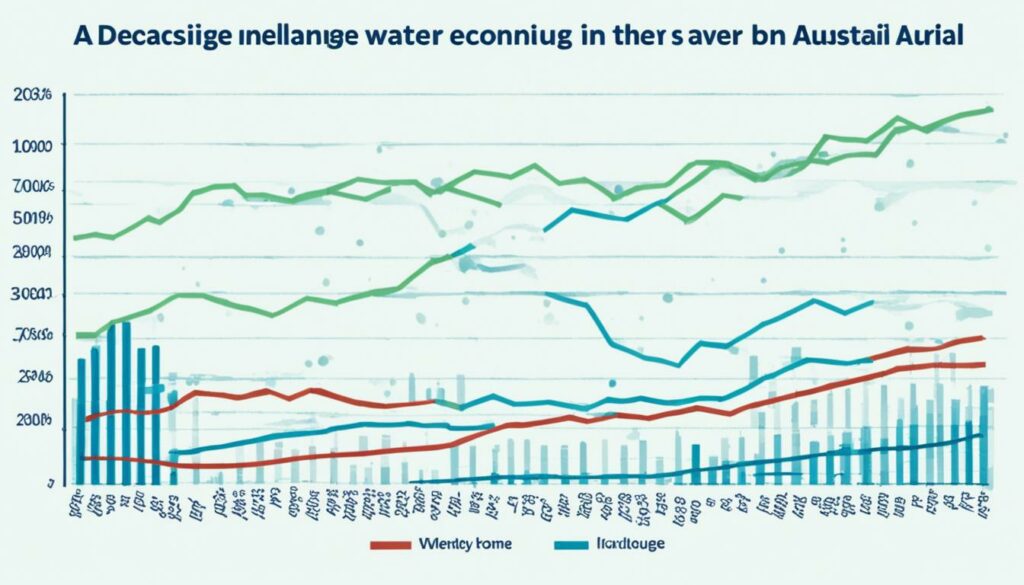
Looking at how people use water at home, studies can predict and cut down on water use, especially in places like Australia. The Moore catchment area in Western Australia is a good example. People there have a great attitude towards saving water. Managing water well doesn’t just save it, it also saves money by cutting running costs and using resources better.
In places like the Murray-Darling Basin (MDB), which is big in water trade, businesses have made a lot of money. In 2016-17, 97% of the water trade’s allocation and 77% of entitlement trades were here. This system has led to great economic outcomes, with an average of about AUD$2 billion in trades each year over the last ten years.
Using water wisely not only saves money but also helps water-focused businesses and new ideas to grow, boosting the economy locally. Between 2006-2007 and 2010-2011, there was about AUD$4.3 billion more in production thanks to water trade. Also, water trading helped cut back on drought losses, going from AUD$11.7 billion to AUD$7 billion in the southern MDB.
From April 2015 to March 2020, the Australian Government got over 68,267.8 megalitres of water for the environment in the MDB. This work protects nature and helps farming-based economies. Knowing how people use water can lead to better ways to manage water, making economies stronger while helping the environment.
| Economic Indicator | Impact with Water Trade |
|---|---|
| GDP Increase (2008-2009) | AUD$220 million |
| Increased Production (2006-2007 and 2010-2011) | AUD$4.3 billion |
| Reduction in Drought Losses (2006-2007 to 2010-2011) | AUD$4.7 billion |
| Water Market Turnover (Annual Average) | AUD$2 billion |
New studies show that caring about the environment links to saving water. This connection tells us that investing in good water use helps both the environment and the economy. So, water saving isn’t just about the planet. It’s also a big deal for economic growth and success.
Effective water management tackles water scarcity and brings big environmental benefits. In Australia, water conservation has revived ecosystems and increased biodiversity. This makes Australia a leader, showing the world the benefits of caring for the environment.
Strategic water management has brought life back to water-dependent places in Australia. Between 2015 and 2020, the Australian Government saved up a lot of water for nature in a key area. This move cut the financial loss from drought a lot, from AUD$11.7 billion down to AUD$7 billion.
In the same area, the water trading market has played a big role in water saving. Since the late 1980s, water reforms and a national framework in 1994 have helped a lot. They made it easier for people to save and share water.
Good water management has also lifted biodiversity. People from different backgrounds now support protecting nature more. Places like Western Tanzania have seen a big change because of local water-saving actions. People’s opinions and actions have improved a lot.
Community efforts in Australia have also made a difference. By coming together, people in areas that face droughts all the time have done a lot for the environment. They’ve shown that community work is key for successful conservation.
| Water Conservation Metric | Range |
|---|---|
| Community attitudes towards water management in Western Australia | 157-178 |
| Perceived antisocial behaviour and residential water conservation | 406-421 |
| Influence of social capital on residential-affecting behaviours | 244-257 |
| Factors influencing conservation attitudes in Western Tanzania | 2213-2230 |
| Wetland resource use among indigenous peoples | 345-365 |
Australia’s work in water management continues to grow ecosystems and biodiversity. They protect their unique plants and animals. And they’re ensuring a healthy future for their water-loving lands. These water efforts show the great results of caring for our planet.
Australia has seen big improvements in the way it uses water. This change has been good for the environment, the economy, and people. For example, a project at CSR saw a big drop in how much water they use. They also cut down on waste water. This project used less water for their cooling towers and made their fans work more efficiently.

Imerys Minerals Australia also did well with water conservation efforts. They now use less water, about 5KL for every tonne of product. And they made their water use more efficient, saving 20%. Shell was clever too. They saved a lot of water by reusing it in tests at their NewPort Terminal. This is a great example of saving resources in big ways.
Water-saving projects have been good for society too. A scheme in Western Australia made it easier for local councils to work together and save more water. It also found that when people understand water better, they’re more likely to save it. An area called Queens Park Regional Open Space did amazingly well in saving water. They used 92% less mains water.
Using smart meters helps manage water better. In places like Perth, this means saving money on water use. Even though people might use more water knowing they can save it, these projects still work. By making good use of what people already know, we save more water without big costs.
The changes in Australia’s water use show a big shift. Environment, money, and society have all benefited. This shows how saving water the right way can be a win for everyone. It sets a good example for taking care of our water for the future.
| Case Study | Water Saving Outcomes | Additional Benefits |
|---|---|---|
| CSR’s Cooling Tower Replacement | 13% reduction in drinking water use (18ML annually), 93% decrease in make-up water use, 43% reduction in trade waste discharge | Energy savings with variable speed drives on fan motors |
| Imerys Minerals Australia | 5KL per tonne of finished product, 20% improvement in water efficiency | Higher productivity and sustainable resource use |
| Shell Newport Terminal | 4.2 ML annual water savings | Reduction in stormwater discharge |
| Queens Park Regional Open Space | 92% reduction in mains water use | Exemplifies replicable water efficiency opportunities |
In wrapping up this study, we’ve seen the importance of having a plan, being creative, and working together. Australia’s work in saving water shows how seriously we can take on water issues. It has put in place strong plans and used many different methods to use water wisely.
Focus on how we use water at home is key. When communities take part and learn more about saving water, it makes a big difference. Learning what the wider society thinks about new water sources has shown us something important. It helps us see how our culture affects the way we use water. The community’s spirit, especially in areas hit by drought, can spark a real change.
Using new and more efficient appliances underlines the power of being innovative. By showing success in managing water, projects like the one in Tehran boost our confidence. In Sydney, smart efforts like the WaterFix program and promoting dual flush toilets have led to major drops in water use.
Australia gives us all hope for the future of water use worldwide. By using the best tech, getting everyone involved, and always checking our impact on nature, we can lead by example. We will encourage the globe to save water, protect our planet, and build a strong future for everyone.
– Prolonged droughts and variable rainfall patterns make water conservation tough.- There are different needs from farming, industry, and homes.- These challenges require smart water-saving plans.
– Agriculture, mining, ethanol production, and fuel distribution face big water issues.- They depend a lot on water and need to manage it well.
– The Yarraville Distillery Cooling Tower Replacement Project by CSR is a great example.- It lowered drinking water use by 13% each year.- It also saved energy, reduced make-up water use, and cut trade waste.
– Advanced tech like automated systems and better purification methods have helped.- They make water use smarter and more efficient across Australia.
– Imerys Minerals Australia used water-saving fixtures and checked for leaks often.- They also improved how they recycle water, leading to a 20% water efficiency boost.
– Water trading has made water use more effective and conserved more water.- It encourages smart technology use and ensures enough water for the environment in places like the Murray-Darling Basin.
– Good water management helps ecosystems and wildlife.- It boosts biodiversity and helps the environment stay healthy.
– Programs, like education and water recycling for non-production use, help the community.- They also offer more treated water for emergencies and everyday use, aiding in water conservation.
– Saving water leads to saving money, reducing costs, and supporting the local economy.- It also encourages new water-focused businesses and ideas, helping the economy grow sustainably.
– Other countries can follow Australia’s lead by using new technology, changing laws, and promoting water trading.- They should also get the community involved to build a sustainable water management plan.
– The mining industry uses systems that reuse water, purify it better, and save water with technology.- This helps mines to use water more efficiently and look after the environment.
– Water trading lets farms use water better, which leads to more crops and less waste.- It also helps protect the environment.
– Water recirculation, like reusing water at Shell Newport Terminal, reduces the need for new water and stormwater discharge.- This saves a lot of water and is good for the environment.
– Australia’s smart water management has helped ecosystems grow by providing enough water for plants and animals.- This has made nature thrive and better support wildlife.